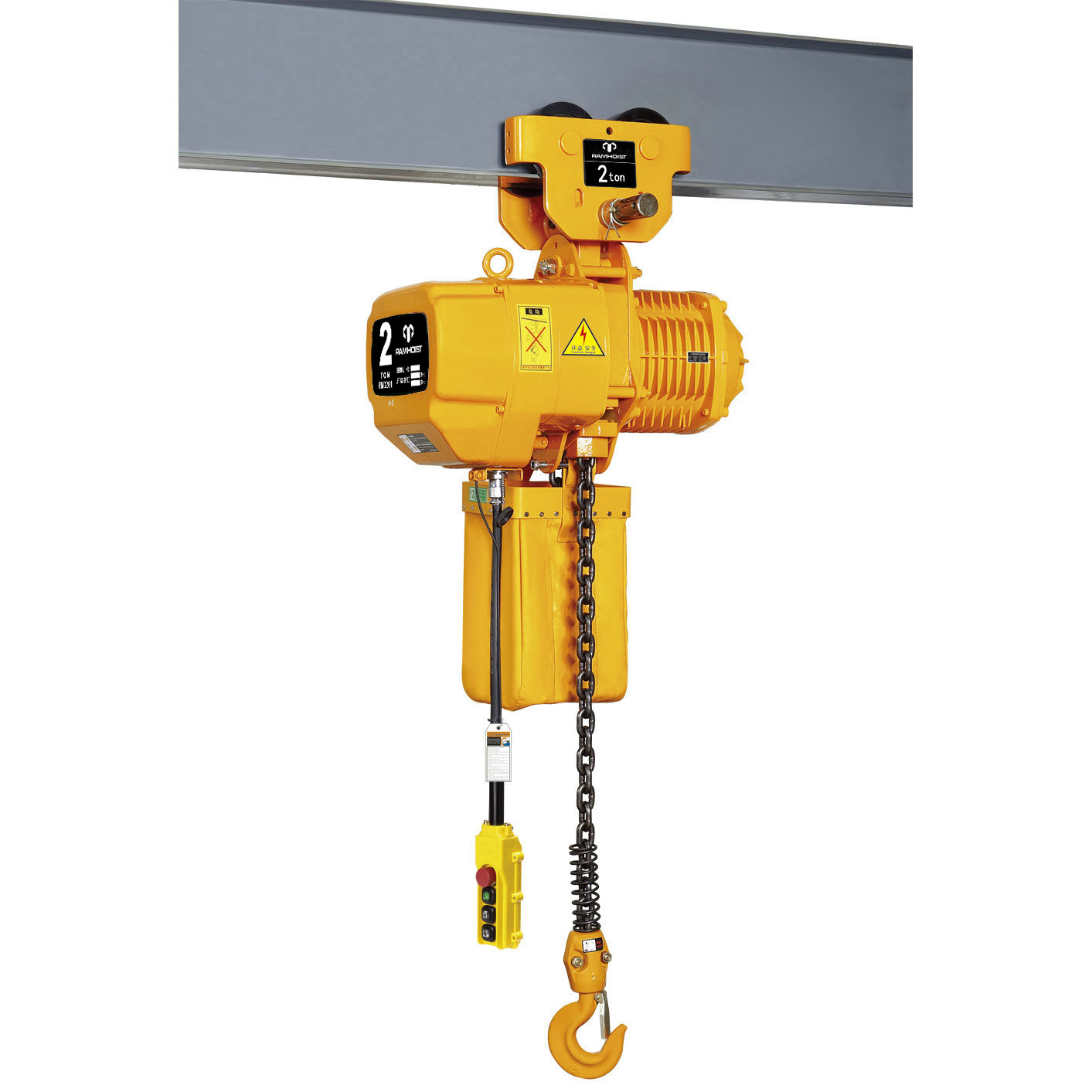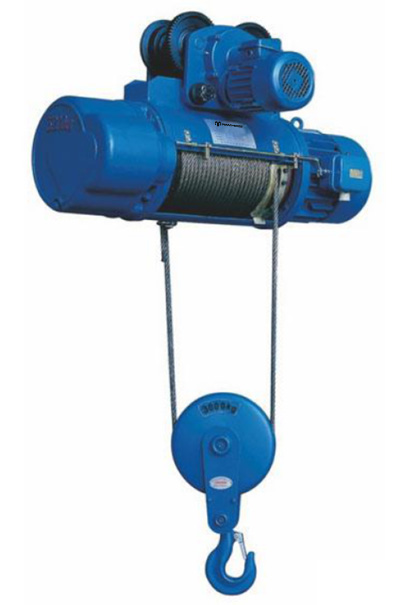
Characteristics of different electric hoists and attention to their use
Keyword:electric hoists Time:2019-1-2 22:49:30
Electric hoists are light and small lifting equipment which consists of motor, transmission mechanism and sprocket. The use of electric hoists are very wide, mainly in major factories, warehouses, wind power, logistics, wharf, construction and other industries, for lifting or unloading cargo. They can also be lifted to facilitate the work or repair of large machines. The electric hoists are operated by operators on the ground with buttons, or in the control room or by wired remote control.
Different electric hoists work in different areas. According to the tonnage and composition of electric hoists, they can be roughly divided into three types: chain electric hoists, steel wire hoists and explosion-proof hoists.
Chain electric hoists are a lighter type of electric hoist, which are composed of motor, transmission mechanism and sprocket. They are used to replace wire rope hoist. The lifting weight is generally 0.5-35 tons and the lifting height is 3-120 meters. Chain electric hoists retain the lightweight and convenient characteristics of the hand hoist, and improve the manual operation and slow lifting speed of the hand hoist. It gathers the advantages of the hand hoist and the electric hoist. The disc brake motor is used as the power cycloidal pin reducer to reduce the speed. The chain electric hoist has compact structure, small size, light weight, high efficiency, convenient use and reliable braking. Maintenance is simple.
Steel wire hoists are light weight, small size, compact structure, many varieties and specifications, smooth operation, simple operation and convenient use. The main components include: reducer, operating mechanism, drum device, hook device, coupling, soft cable current introducer, limiter and so on. It works in factories, mines, ports, warehouses, freight yards and stores. It is a necessary machine to improve labor efficiency and working conditions. Steel wire hoists can be used in straight, curved and cyclic overhead rails on the same plane. It can also be used in electric single girder, manual single girder, bridge crane, cantilever and gantry cranes with I-beam as track, normally steel wire hoists lifting speed is 8 m/min in 50HZ, lifting weight in 0.5 tons to 10 tons, wire rope length can be customized according to customer requirements.
Explosion-proof electric hoists are light and small lifting equipment. their advantages are light weight, small size and large lifting capacity. When the plant is filled with explosive mixture, it is a useful tool to improve labor productivity on the premise of ensuring safety. The exposed explosion-proof parts of them are made of special spark-free materials, and the explosion-proof performance is safe and reliable. explosion-proof electric hoist is mainly suitable for explosion-proof electric hoist used in type I coal mine and type II factory. The temperature group is T 1-T 4 explosion dangerous places.
Next is some points for attention in the use of electric hoist.
1. Operators must undergo professional study, receive safety technical training, and be checked and approved by the state or competent business authorities before they can work.
2. Before using electric hoist, you must carefully check the safety and technical status of the vulnerable parts such as hook, wire rope, reducer and so on.
3. Hanging objects, hanging baskets, hangers and cables shall be suspended in the air during shutdown or rest.
4. Lifting operations shall not be carried out when the suspension is tied up, hanging is not firm or unbalanced will lead possible slip, and there is no liner between the edges and corners for suspension the electric hoist.
5. Lifting operations shall not be carried out when the site, suspended objects and command signals cannot be seen.




- No information
-
1. Design objective of electronic crane scale network management. (1) Adopt advanced distributed data processing techno…
-
Electronic crane scale bearing platform installation to focus Electronic crane scale can be installed generally on the li…


